White Balance
White balance (WB) is for making the white areas look white. Normally, the Auto [] (Ambience priority) or [
] (White priority) setting will obtain the correct white balance. If natural-looking colors cannot be obtained with Auto, you can select the white balance to match the light source or set it manually by shooting a white object.
In Basic Zone modes, [] (Ambience priority) is set automatically. ([
] (White priority) is set in
mode.)
-
Press the
button (
).

- With an image displayed on the screen, press the
button.
- With an image displayed on the screen, press the
-
Select the white balance item.
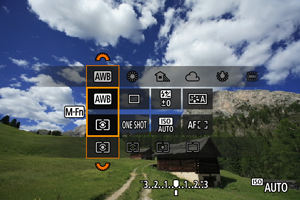
- Press the
button to select the white balance setting item.
- Press the
-
Select a white balance setting.
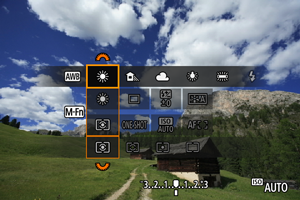
- Turn the
dial to make a selection.
- Turn the
Note
- For [
] and [
] setting instructions, see [
] Auto White Balance.
- To set your preferred color temperature, select [
] in [
: White balance], then turn the
dial.
- White balance settings cannot be changed while you are pressing the movie shooting button to record a movie.
- Movie Exif information will include the white balance setting value at the time recording began.
| (Approx.) | ||
| Display | Mode | Color Temperature (K: Kelvin) |
|---|---|---|
| Auto (Ambience priority) | 3000–7000 | |
| Auto (White priority) | ||
| Daylight | 5200 | |
| Shade | 7000 | |
| Cloudy, twilight, sunset | 6000 | |
| Tungsten light | 3200 | |
| White fluorescent light | 4000 | |
| When using Flash | Automatically set* | |
| Custom | 2000–10000 | |
| Color temperature | 2500–10000 | |
Applicable with Speedlites having a color temperature transmission function. Otherwise, it will be fixed to approx. 6000K.
White Balance
The human eye adapts to changes in lighting so that white objects look white under all kinds of lighting. Cameras determine white from the color temperature of lighting and, based on this, apply image processing to make color tones look natural in your shots.
[ ] Auto White Balance
] Auto White Balance
[] (Ambience priority) emphasizes the ambiance of scenes under tungsten or similar lighting, producing images with a slightly warm color cast.
Selecting [] (White priority) will produce images with a less warm color cast.
-
Select [
: White balance].
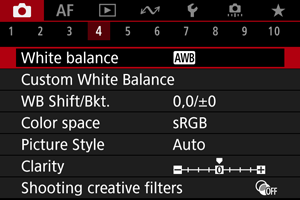
-
Select [
].
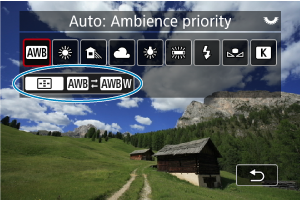
- With [
] selected, press the
button.
- With [
-
Select an option.
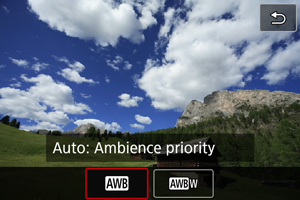
Caution
-
Precautions when set to [
] (White priority)
- Reddish subjects may appear slightly faded.
- The color cast of images may not be less warm in scenes that include multiple light sources.
- In flash photography, the color tone will be the same as with [
] (Ambience priority).
[ ] Custom White Balance
] Custom White Balance
With custom white balance, you can manually set the white balance for the specific light source of the shooting location. Make sure to perform this procedure under the light source at the actual location of the shoot.
Registration from an image on a card
-
Shoot a white object.

Caution
- Correct white balance may not be obtained if the exposure of your image differs greatly from standard exposure.
- These images cannot be selected: images captured with the Picture Style set to [Monochrome], images from multiple-exposure or RAW burst shooting, images that are cropped or have a Creative filter applied, or images from another camera.
-
Select [
: Custom White Balance].
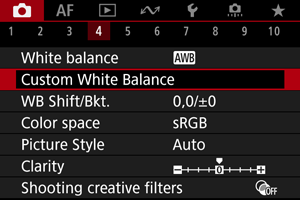
-
Import the white balance data.
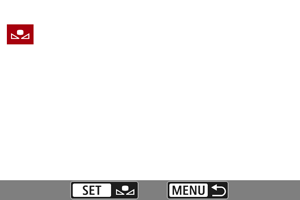
- Turn the
dial to select the image captured in step 1, then press the
button.
- Select [OK] to import the data.
- Turn the
-
Select [
: White balance].
-
Select the custom white balance.
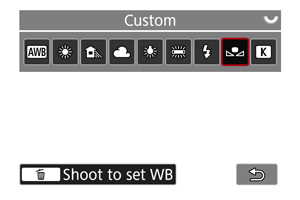
- Select [
].
- Select [
Shooting and registering white balances
-
Press the
button.
-
Select the white balance item.
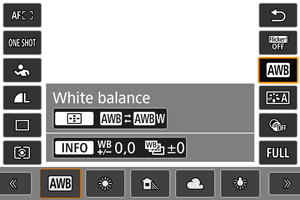
- Press the
keys for selection.
- Press the
-
Select [Shoot to set WB].
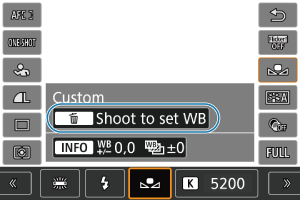
- Turn the
dial or press the
keys to select [
], then press the
button.
- Turn the
-
Shoot a white object.
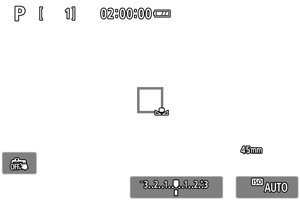
Caution
- Correct white balance may not be obtained if the exposure of your image differs greatly from standard exposure.
Note
- Instead of shooting a white object, you can also shoot a gray card or standard 18% gray reflector (commercially available).
[ ] Color Temperature
] Color Temperature
A value can be set representing the white balance color temperature.
Select [
: White balance].
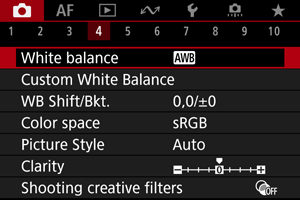
Set the color temperature.
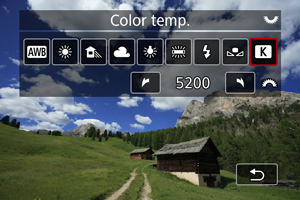
- Select [
].
- Turn the
dial to set a color temperature, then press the
button.
- The color temperature can be set from approx. 2500K to 10000K in 100K increments.
- Select [
Note
- When setting the color temperature for an artificial light source, set the white balance correction (magenta or green bias) as necessary.
- When setting [
] to a value measured with a commercially available color temperature meter, take some test shots in advance and adjust the setting as needed to compensate for any difference between the color temperature meter and the camera.
